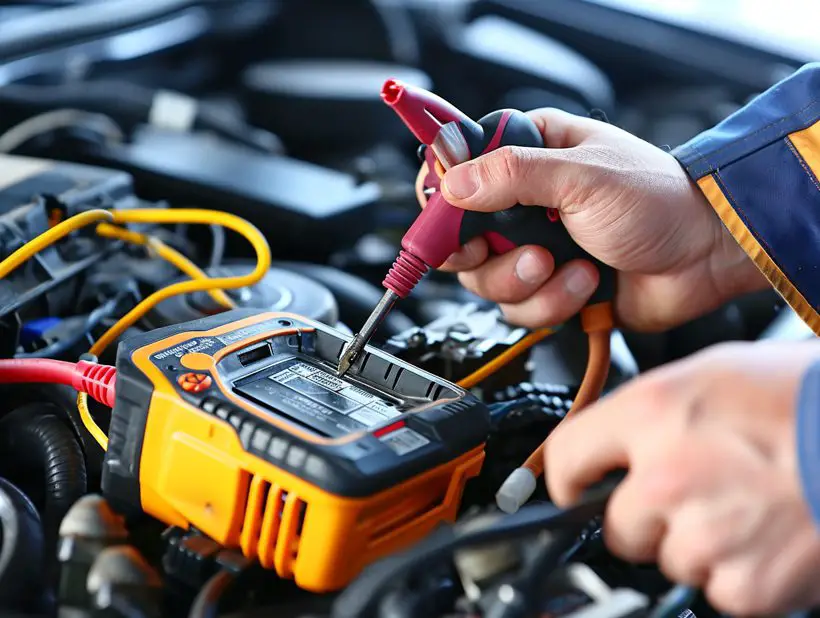Dealing with a faulty engine coolant temperature sensor can be a real headache. I’ve been there, and trust me, it’s not just about the inconvenience. It can lead to serious engine problems if not addressed promptly. That’s why I’m here to guide you through spotting those pesky bad sensor symptoms and getting them fixed.
Knowing when to replace your engine coolant temperature sensor is crucial for maintaining your vehicle’s health. If you’re experiencing erratic temperature readings, poor fuel economy, or a check engine light that just won’t quit, chances are it’s time to take a closer look. Let’s dive into the tell-tale signs and get your ride running smoothly again.
What is the Engine Coolant Temperature Sensor?
When I’m under the hood of my car discussing engine mechanics, I often refer to the engine coolant temperature sensor, or ECT sensor, as the unsung hero of the combustion chamber ballet. This little gadget plays a pivotal role in ensuring the engine runs at optimal temperature. The ECT sensor, nestled near the thermostat housing, reads the temperature of the coolant in the engine and sends this data to the car’s computer system.
The vehicle’s computer, or engine control unit (ECU), then uses this temperature data to make critical adjustments to the fuel injection system and ignition timing. In simpler terms, the ECT sensor helps maintain the delicate balance between fuel efficiency, emission control, and engine performance. Its function is even more pertinent during cold starts when the engine needs to warm up to its ideal operational temperature.

Here’s a breakdown of what the ECT sensor manages:
- Engine warm-up: The sensor detects cold engine temperatures and signals the ECU to enrich the fuel mixture.
- Idle speed: It helps regulate a stable idle speed while the engine is still reaching its proper temperature.
- Ignition timing: Hotter or colder engine temperatures require adjustments in ignition timing for smooth operation.
- Emission controls: The ECT sensor’s readings affect how the ECU manages emission control systems, including the exhaust gas recirculation (EGR) valve and evaporative emissions (EVAP) system.
Without a properly functioning ECT sensor, it’s like driving blindfolded through the complexities of engine management. I’ve seen it countless times – a faulty ECT sensor throws everything off-kilter, leading to the symptoms previously discussed. The importance of this sensor cannot be understated; it’s as crucial as the thermostat in your home, regulating the environment for comfort and efficiency. While it might seem like just another component, its impact on my car’s performance, fuel economy, and emissions is substantial and underscores the need for timely intervention when things go awry.
Importance of the Engine Coolant Temperature Sensor
When I think of maintaining my vehicle’s performance, I consider the engine coolant temperature sensor as a crucial piece of the puzzle. The ECT: it‚Äôs essentially the watchdog of your engine’s temperature, constantly monitoring and sending vital data to the computer system. Here’s why it’s so substantial:
- Fuel Efficiency: The sensor ensures that the engine operates at the most efficient temperature, preventing it from running too hot or cold.
- Emissions Control: Proper temperature regulation enables the engine to minimize harmful emissions, meeting environmental standards.
- Engine Longevity: By keeping the engine at its ideal temperature, the ECT sensor helps prevent overheating, which can be detrimental to engine components over time.

A fully functional ECT sensor assists in delivering accurate temperature readings, which in turn allows the car’s computer system to:
- Fine-tune the air-fuel mixture
- Regulate the timing of fuel injection
- Manage ignition timing accurately
These actions result in a well-optimized engine that performs at its best under all conditions.
Interestingly, the ECT sensor is also a linchpin during a cold start, a scenario where the engine requires a bit more care to reach its preferred operational temperature. The computer relies on the information from the sensor to enrich the fuel mixture, making the engine easier to start while reducing potential wear and tear.
It doesn’t end there. The ECT sensor’s role in overseeing idle speed cannot be overstated. Picture this: I’m waiting at a red light, and my engine is idling smoothly. That’s the ECT sensor at work, ensuring the engine doesn’t rev too high or stall.
Given its integral part in an engine’s operation, I’m always alert for any signs of ECT sensor failure. It’s not just about keeping my car running, it’s about safeguarding my investment and ensuring a safe, efficient driving experience. Keeping an eye on the ECT sensor is as important as any other routine maintenance task, and I make sure to include it in my vehicle’s service checklist.
Signs of a Bad Engine Coolant Temperature Sensor
When I’m inspecting a vehicle for issues, one of the first places I’ll check is the engine coolant temperature sensor (ECT sensor). This little device can cause some substantial problems when it’s not functioning correctly. Here’s what I keep an eye out for:
- Erratic Engine Behavior: If I notice the engine’s temperature gauge fluctuating wildly or the vehicle experiences rough idling, it’s often a sign the ECT sensor is sending the car’s computer inaccurate information.
- Poor Fuel Economy: When the car starts guzzling gas more than usual, it could be due to the ECT sensor feeding incorrect data to the engine’s computer, throwing off the air-to-fuel ratio.
- Overheating Engine: An overlooked symptom is engine overheating. If the ECT sensor fails to tell the computer that the engine temperature is rising, it won’t adjust the fuel injection rate, which can lead to overheating.
- Cold Start Issues: Difficulty starting the vehicle in cold weather may also indicate a problem with the ECT sensor, as it’s responsible for adjusting the air-fuel mixture during startup to compensate for the cold engine temperature.
- Check Engine Light: Of course, a lit check engine light can point to a myriad of issues, but through diagnostic codes, I’ll determine if the ECT sensor could be the culprit.
For those who love a good visual aid, I’ve tabled some common engine behaviors and their potential link to a failing ECT sensor:
| Engine Behavior | Potential ECT Sensor Link |
|---|---|
| Erratic Temperature Gauge | High Probability |
| Rough Idle | Moderate Probability |
| Increased Fuel Consumption | High Probability |
| Overheating | Moderate Probability |
| Difficulty with Cold Starts | High Probability |
| Illuminated Check Engine Light | Varies |
Monitoring your vehicle’s behavior and these symptoms will help you stay ahead of any potential issues with the ECT sensor. Remember, early detection can save you from costly repairs down the road. Considering the pivotal role the ECT sensor plays in the optimal performance of your vehicle, it’s essential to address these signs promptly and with the expertise that only experience brings.
Diagnosing the Problem
When my car started showing signs of erratic behavior, I knew it was time for some detective work. Identifying the signs of a failing Engine Coolant Temperature (ECT) sensor is key to a quick and efficient fix. Here’s how I go about diagnosing the issue:

Before anything, I check for dashboard warnings. A lit check engine light can indicate a range of issues, including a problematic ECT sensor. I use an OBD-II scanner to retrieve the diagnostic trouble codes (DTCs) stored in the car’s computer. If I find codes related to the coolant temperature, I consider them a starting point in my investigation.
Here are the steps I follow:
- Scan for Trouble Codes: I plugin my OBD-II scanner, note down any relevant DTCs, and then clear them to see if they return after a test drive.
- Observe Temperature Readings: I monitor the temperature readings on the dashboard. If they fluctuate wildly or read unusually high or low, it’s a telltale sign.
- Visual Inspection: I look at the ECT sensor itself. Any signs of damage, corrosion, or coolant leaks around the sensor could be the culprit.
- Resistance Check: Using a multimeter, I measure the resistance of the ECT sensor. Resistance should change with the engine temperature – if it doesn’t, the sensor may be at fault.
- Compare to Specifications: I always keep the service manual handy, comparing the resistance readings with the specified range for my car’s ECT sensor.
If the steps point to a faulty ECT sensor, I prepare for a replacement. However, I stay mindful that other issues, like a malfunctioning thermostat or a cooling system leak, can mimic the symptoms of a bad sensor. Hence, I ensure to rule out these factors to prevent misdiagnosis.
By methodically checking each possibility and ruling out other potential problems, I can confidently pinpoint the reason for the abnormal engine behavior. It’s imperative not to rush the diagnosis process because accuracy here saves time and money in the long run. Remember, the goal is to catch the issue early enough and ensure everything under the hood works in harmony.
How to Replace the Engine Coolant Temperature Sensor

When it comes time to replace the ECT sensor on your car, it’s essential to approach the task methodically. I’ll guide you through a step-by-step process that ensures you can safely and effectively replace the sensor without professional help.
Safety First: Before I start any work under the hood, I always make sure the engine is off and cooled down. I also disconnect the battery to avoid any electrical issues.
- Locate the ECT Sensor: Usually, it’s found near the thermostat housing, attached to the engine block. Most cars have it readily accessible, but it may vary depends on the make and model.
- Remove the Electrical Connector: Gently disconnect the wiring harness from the sensor. This might require a bit of wiggling, but I’m careful not to apply excessive force to prevent any damage.
- Unscrew the Sensor: With the correct size wrench or socket, I turn the sensor counterclockwise to loosen and remove it. If it’s stubborn, I use penetrating oil to help ease the process.
- Inspect the Thread Area: Before installing the new ECT sensor, I check the threads on the engine block for any debris or old thread sealant.
- Install the New Sensor: I apply a thread sealant if recommended for my car’s model. Then, screw in the new ECT sensor by hand to avoid cross-threading, followed by tightening it with the wrench until it’s snug.
- Reconnect the Electrical Connector: Once the sensor is securely in place, I reattach the wiring harness, ensuring it clicks into position, which confirms it’s properly connected.
- Restore Power and Check: After the new ECT sensor is installed, I reconnect the battery and start the car to check for any dashboard warnings or irregularities in temperature readings.
Throughout this process, it’s vital to consult the vehicle’s service manual for specifics. I pay attention to recommended torques and installation steps to avoid any errors. Some vehicles might have variations in sensor location and installation techniques, so I ensure I have the correct information for my specific car make and model.
By following these steps, I’ve successfully replaced the Engine Coolant Temperature Sensor without the need to rush to a mechanic. Regular maintenance and timely replacement of this small but crucial component keep my car running efficiently and helps me avoid costly repairs down the road.
Conclusion
Replacing your engine coolant temperature sensor is a manageable task that can save you time and money while ensuring your vehicle runs smoothly. Remember it’s not just about fixing a problem‚ it’s about maintaining the health of your engine and optimizing performance. Don’t wait for the symptoms of a bad sensor to worsen. Take charge of your car’s well-being with the confidence that you’re keeping it in top condition. Regular maintenance like this is the key to a long-lasting and efficient vehicle. So grab your tools, follow the steps carefully, and you’ll be back on the road with a fully functional ECT sensor in no time.
